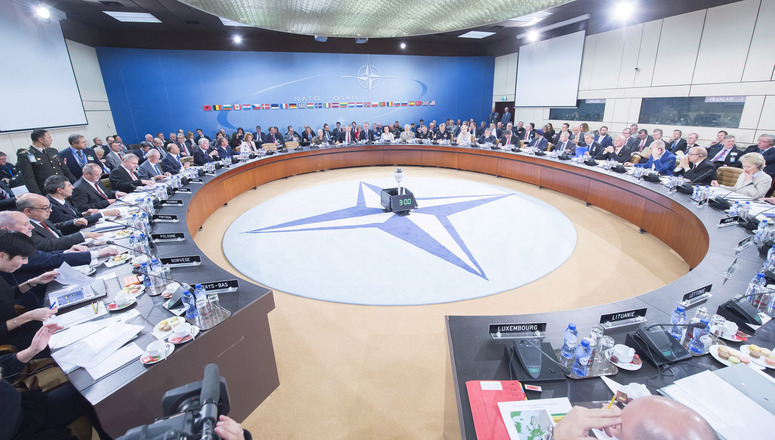Read the facts and the truth
Russia has a long and chequered history with NATO.
Throughout Russian society and government, a tangible uneasiness is present.
This is largely due to many myths about the organisation founded in 1949.
Here you may read what NATO itself tells about Russia’s top 5 myths about the alliance:
- Relations started after the end of the Cold War, when Russia joined the North Atlantic Cooperation Council (1991) and the Partnership for Peace programme (1994).
- The 1997 NATO-Russia Founding Act provided the formal basis for relations.
- Dialogue and cooperation were strengthened in 2002 with the establishment of the NATO-Russia Council (NRC) to serve as a forum for consultation on current security issues and to direct practical cooperation in a wide range of areas.
- Russia’s disproportionate military action in Georgia in August 2008 led to the suspension of formal meetings of the NRC and cooperation in some areas, until spring 2009. The Allies continue to call on Russia to reverse its recognition of the Georgian regions of Abkhazia and South Ossetia as independent states.
- All practical civilian and military cooperation under the NRC with Russia was suspended in April 2014 in response to the Russia-Ukraine conflict.
- At the Wales Summit in September 2014, NATO leaders condemned Russia’s military intervention in Ukraine and demanded that Russia comply with international law and its international obligations and responsibilities; end its illegal and illegitimate occupation and ‘annexation’ of Crimea; refrain from aggressive actions against Ukraine; withdraw its troops; halt the flow of weapons, equipment, people and money across the border to the separatists; and stop fomenting tension along and across the Ukrainian border.
- NATO is also concerned about Russia’s increasing military activities along NATO’s borders, which continues to make the Euro-Atlantic security environment less stable and predictable.
- The NRC has met on 20 April 2016 and 13 July 2016 to discuss the crisis in and around Ukraine; issues related to military activities, transparency and risk reduction, and to assess the security situation in Afghanistan.
Myth 1
NATO has outlived its purpose after the Cold War.
NATO has helped to create and preserve stability in Europe for decades. After the Cold War and the collapse of the Soviet empire, there was new optimism in Europe, and former adversaries banded together to create NATO and the EU, while Russia became a partner.
NATO’s mission evolved, not only maintaining it’s collective defence, but stepping up to manage conflicts further afield such as in the Balkans or Afghanistan.
The world is a more dangerous place today than it has been in decades, for many partners, that’s a reason to seek NATO membership.
Myth 2
NATO is encircling Russia
This myth bypasses simple geographic logic. The land border of Russia is over 20,000 kilometres long. Of that, less than one-sixteenth (1,215km) is with NATO members. 14 countries share land borders with Russia, and only five of those are NATO members.
NATO has a military presence in three places outside the alliance, Kosovo, Afghanistan and off the Horn of Africa, with all operations carried out with a UN mandate. Conversely, Russia has military bases and soldiers in Georgia, Moldova and Ukraine, all without the consent of their own governments.
Myth 3
NATO has violated the NATO-Russia Founding Act
By signing the NATO-Russia Founding Act, Russia pledged not to threaten or use force against NATO Allies and any other state. It has broken this commitment with its annexation of Crimea, and its continued support of militants in eastern Ukraine.
NATO, on the other hand, when deploying battalions to the east of the Alliance, they agreed they would be rotational and below any reasonable definition of “substantial combat forces”.
Myth 4
NATO missile defense targets Russia
NATO’s missile defence system is not directed against Russia. Geography and physics make it impossible for the NATO system to shoot down Russian intercontinental missiles. Their capabilities are too limited, their planned numbers too few and their locations too far south to do so.
Myth 5
NATO is preparing for war with Russia
NATO is a defensive alliance, with the purpose of protecting member states. They do not outwardly seek confrontation or war. All military exercises are announced well in advance and are subject to international observation. The plans for more forces in the Baltic States and Poland are in response to the changing environment after the illegal annexation of Crimea.
